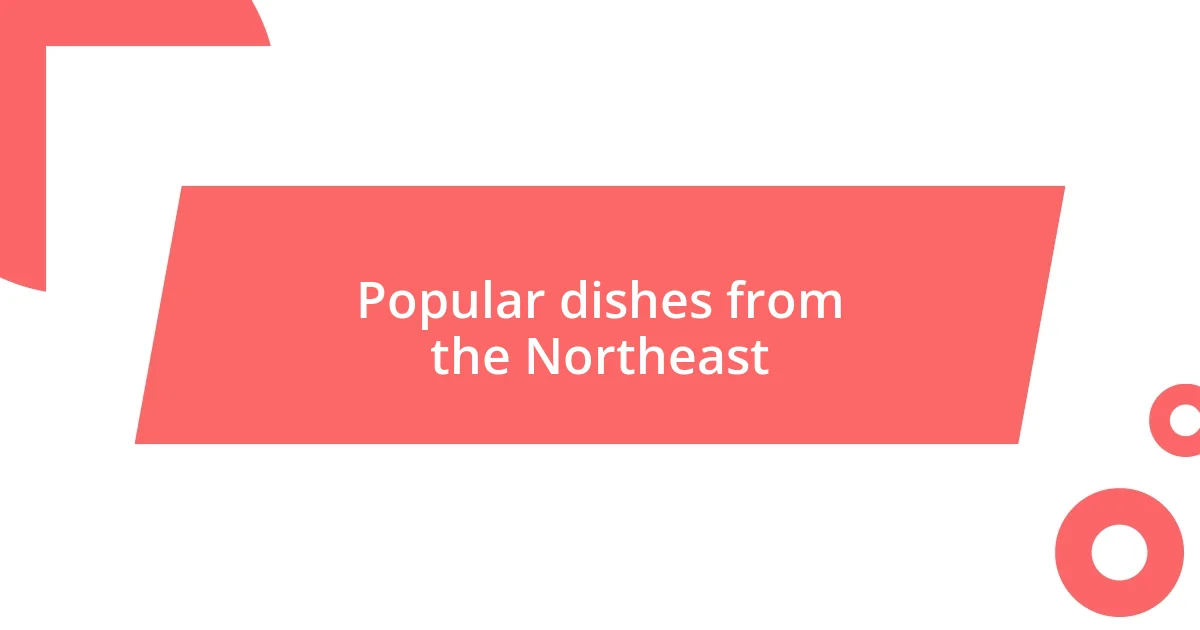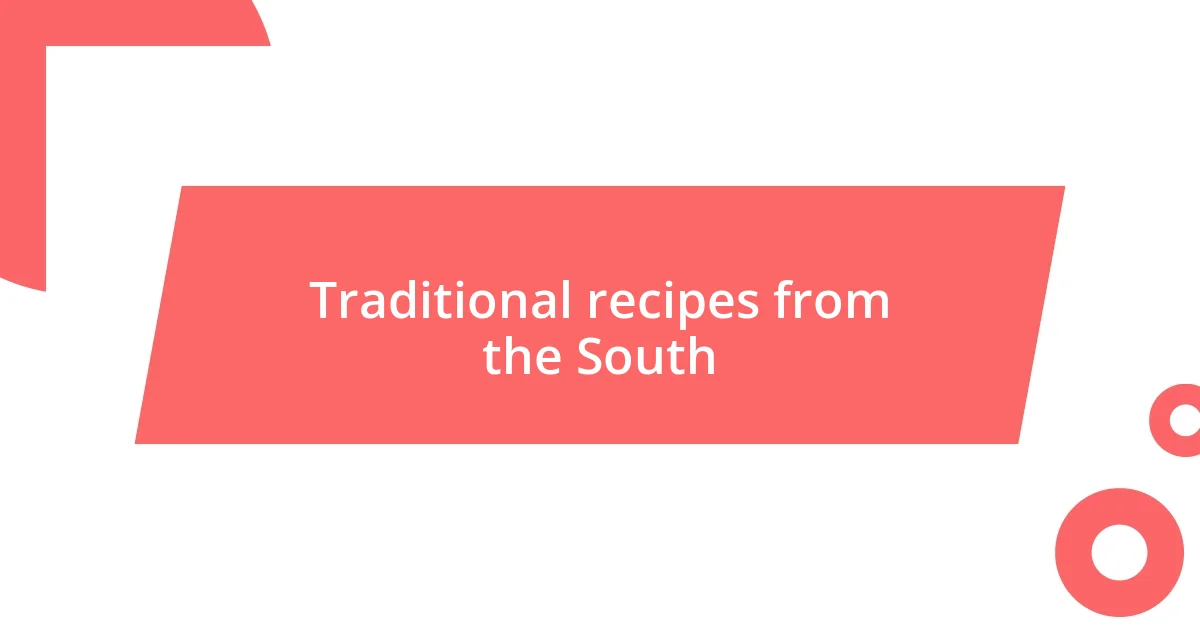Key takeaways:
- Brazilian cuisine is a rich blend of indigenous, African, and European influences, with each region offering unique dishes that reflect its culture and traditions.
- Key ingredients like rice, beans, and dendê oil are foundational in Brazilian cooking, enhancing flavors and evoking a sense of community through shared meals.
- Experiencing Brazilian cuisine involves exploring local markets, dining at hidden gems recommended by locals, and embracing the cultural significance of communal eating.

Introduction to Brazilian cuisine
Brazilian cuisine is a vibrant tapestry woven from indigenous, African, and European influences, creating a culinary landscape that’s as diverse as the country itself. I remember my first taste of feijoada, a black bean stew filled with various meats; it was a revelation that transported me across regions and cultures in a single bite. Can you imagine how many stories a bowl of feijoada could tell?
Every region has its signature dishes, shaped by local ingredients and traditions, making each meal a unique reflection of Brazil’s rich heritage. The experience of savoring moqueca, a fish stew prepared with coconut milk and dendê oil, is not just about the taste; it’s about understanding the coastal influences of Bahia. This dish evokes memories of seaside gatherings filled with laughter and music, reminding me of how food can knit people together in celebration.
As I delved deeper into Brazilian cuisine, I realized that each region’s specialty reveals a different facet of Brazilian identity. Have you ever tried a street food like coxinha? These delicious chicken croquettes encapsulate Brazil’s love for finger foods and communal dining. It’s fascinating how food is a gateway to understanding the culture, isn’t it?

Overview of regional dishes
Brazil’s regional dishes not only tantalize the taste buds but also tell stories of local culture and tradition. Each area boasts its own unique flavors, influenced by history and geography. For me, experiencing the distinct regional dishes was like embarking on a culinary road trip across the vibrant landscapes of Brazil.
Here are some standout regional dishes I encountered on my journey:
- Feijoada – A hearty black bean stew with an array of meats, often enjoyed with rice and orange slices, originating from the southeastern regions.
- Moqueca – A fragrant fish stew from Bahia, combining fresh seafood with coconut milk and spices, evoking the essence of coastal living.
- Acarajé – Fried black-eyed pea balls filled with vatapá (a shrimp paste), a beloved street food in Bahia that brings waves of flavor in each bite.
- Pirão – A thick, savory dish made from cassava flour and fish broth, often served alongside various seafood dishes, highlighting the Amazonian influence.
- Churrasco – A Brazilian barbecue experience, especially popular in the southern states, where various cuts of meat are grilled over open flames and served with chimichurri sauce.
Each dish reflects the land it comes from, making the exploration of Brazil’s regional cuisine an exciting and emotional adventure. I remember the simmering aromas wafting from a street vendor’s cart, drawing me in like a moth to a flame, leaving me with a sense of belonging and discovery in every new flavor I experienced.

Key ingredients in Brazilian cooking
The essence of Brazilian cooking lies in its key ingredients, each representing a piece of the country’s diverse culture. Staples like rice and beans form the foundation of many dishes, providing sustenance and comfort. The first time I enjoyed a simple plate of rice and beans topped with shredded beef, I was surprised by how something so basic could evoke such warmth and satisfaction. It’s a dish you can find in every home, becoming a common ground for families to gather.
Moving on to spices, I can’t help but highlight the importance of dendê oil, known for its vibrant color and rich flavor, especially in dishes like moqueca. The first time I smelled it cooking, it reminded me of the bustling markets in Bahia, where the air buzzes with life and the scent of cooked dishes mingles with the ocean breeze. This oil, derived from palm fruit, adds depth and a unique essence that can’t be replicated, truly embodying the spirit of Brazilian cuisine.
Of course, we can’t overlook tropical ingredients such as cassava and plantains. My first encounter with cassava chips was at a local festivity, where they were served hot and crunchy. The joy of sharing those crisp bites with strangers, all while joining in local dances, was a celebration of community around food. It’s intriguing how these ingredients not only nourish us but also bring us together, don’t you think?
| Key Ingredient | Description |
|---|---|
| Rice and Beans | The heart of many Brazilian meals, providing nutrition and comfort. |
| Dendê Oil | A palm oil that lends a distinct flavor to dishes like moqueca, rich and aromatic. |
| Cassava | A versatile root often used in snacks or as a side dish, symbolizing local hospitality. |

Popular dishes from the Northeast
Continuing my culinary journey through Brazil, the Northeast region truly captivated me with its vibrant flavors and colorful dishes. One standout for me was Baião de Dois, a cozy combination of rice and beans cooked together with delicious bits of cheese and spices. I remember sitting in a local eatery, the warmth of the dish and the laughter of fellow diners wrapping around me like a comforting blanket. There’s something special about enjoying a dish that feels like a celebration of community, wouldn’t you agree?
Another highlight was the Carne de Sol, sun-dried beef that’s simply bursting with flavor. I found it served with a side of soft, creamy mandioquinha (sweet potato) purée, which balanced the dish beautifully. I can still recall the first bite: the richness of the beef paired with that subtle sweetness was a delightful revelation. It made me think of how food can be a storyteller, revealing so much about the land it’s from and the people who prepare it.
Lastly, I was taken by the sweet delight of Bolo de Rolo, a traditional rolled cake that often features layers of guava paste. When I first tasted it, the sweetness of the guava melded with the soft cake created an exquisite harmony that lingered on my palate. Seriously, have you ever had a dessert that felt like a warm hug? That’s exactly what this cake felt like to me—a comforting conclusion to a vibrant meal steeped in the rich cultural tapestry of Brazil’s Northeast.

Famous foods from the Southeast

Famous foods from the Southeast
Exploring the Southeast of Brazil, I quickly became enamored with feijoada, a rich and hearty black bean stew. This dish became a symbol of gatherings and celebrations, each bowl filled with various cuts of pork and beef, creating a comforting warmth that wrapped around me like an embrace. The first time I shared it with friends, the laughter and stories we exchanged over the table highlighted how food can forge connections, don’t you think?
Another dish that captured my heart was pão de queijo, those mouthwatering cheese bread rolls that seem to be a staple everywhere. I remember wandering through the streets of Minas Gerais, indulging in these soft, cheesy bites fresh from a bakery. The moment I took my first bite and felt that delightful chewiness, I knew it was more than a snack; it was a joyful experience I never wanted to end.
Then, there’s tutu de feijão, a fascinating dish of mashed beans seasoned with spices and accompanied by crispy bacon. I vividly recall a family dinner where this dish was the star. Its creamy texture paired with the crunch of the bacon made it impossible to resist. I found myself wondering how a simple mixture could evoke such deep flavors and feelings of nostalgia. Isn’t it amazing how one dish can transport you to another time or place?

Traditional recipes from the South

Traditional recipes from the South
In the South, I was absolutely enchanted by chimarrão, a traditional mate tea that’s not just a drink but an experience. The ritual of sharing it with friends around a fire was something else entirely. Sipping that earthy beverage, I felt a deep sense of connection with everyone in the circle, as if we were sharing stories, laughter, and even silence in this beautiful moment. Have you ever experienced the joy of community through a simple drink like that?
Another highlight was bares, a scrumptious dish featuring rice, beans, and seasoned meat, often enjoyed with a sprinkle of chimichurri. I recall visiting a cozy neighborhood restaurant where the aroma captivated me the moment I walked in. The first bite was a burst of flavor that transported me right to a family gathering, that comforting feeling of home cooked goodness swirling around me. It made me reflect on how food can evoke memories we thought were long forgotten.
The double-layered delight of cuca, a traditional cake with fruits like apples or berries, stole my heart as well. I remember the moment I spotted it in a small bakery; it looked so inviting. The soft, crumbly texture paired with the sweet-tart fruit created a blissful contrast that was pure perfection in every forkful. That cake was not just dessert; it was an experience that lingered long after I had left the bakery. Isn’t it remarkable how one slice can capture the essence of a region’s culinary heritage?

Tips for exploring Brazilian cuisine
When diving into Brazilian cuisine, I recommend starting with local markets. Each market has its own unique vibe, filled with colors and aromas that tell stories of the region. The first time I browsed a market in Bahia, I was overwhelmed by the vibrant stands filled with tropical fruits and spices. Have you ever tasted a fresh coconut straight from the shell? The sheer delight of that sweet water brought me closer to the culture and the warmth of its people.
Don’t hesitate to ask locals for their favorite spots to eat. I discovered that many hidden gems aren’t heavily advertised, and those are often the places serving the most authentic dishes. Once, I followed a friendly local to a small corner restaurant, and the moqueca served there was unlike anything I had eaten before. It was rich, fragrant, and made with love, served in a way that felt like I was being welcomed into their home. Can you remember a meal that felt like it was made just for you?
Finally, embrace the practice of sharing meals. In Brazil, food is often about connection and community. I vividly remember sitting around a table piled high with assados, grilled meats that seemed to go on forever. Each bite came with laughter and engaging stories from friends I had just met. These moments taught me that sharing a meal goes beyond just feeding the body; it nourishes the soul too, wouldn’t you agree?














